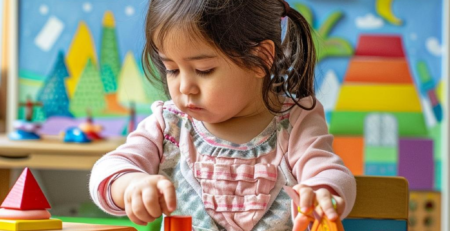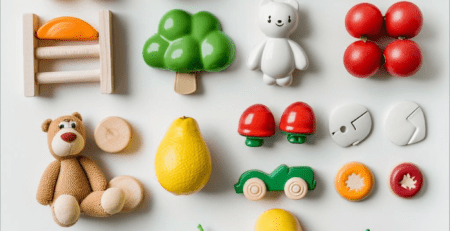
5
Teaching Kids the Value of Sharing: Empower Your Children to Build Strong Relationships
In a world that often emphasizes individualism and competition, teaching children the value of sharing is essential for their social, emotional, and moral development. Learning to share not only fosters cooperation and empathy, but also lays the groundwork for positive relationships and a sense of community. As parents, educators, and caregivers, it is our responsibility to instill these important values in our children. In this article, we will explore effective strategies and practical tips on how to help children learn about sharing and the benefits it brings to their lives and the world around them.
Table of Contents
- Introduction
- Lead by Example
- Teach Empathy
- Set Clear Expectations
- Use Positive Reinforcement
- Practice Turn-Taking
- Encourage Communication
- Q&A
- The Way Forward
Introduction
Lead by Example
When it comes to teaching children about sharing, one of the most effective ways to do so is by leading by example. Children are like sponges, absorbing the behaviors and actions of the adults around them. By demonstrating the importance of sharing in your own actions and interactions, you can set a positive example for the children in your life. This can help them understand the value of sharing and encourage them to do the same.
Here are some ways you can lead by example:
– Share your own belongings with others, demonstrating the act of giving.
– Show kindness and generosity towards others, whether it’s with material things or through acts of service.
- Talk to your children about the importance of sharing and why it’s meaningful to you.
– Offer praise and positive reinforcement when you see your children sharing with others.
By consistently modeling these behaviors, you can help instill a sense of generosity and empathy in children, ultimately shaping them into caring and compassionate individuals.
| Ways to Demonstrate Sharing | |
| Share your own belongings | Show kindness and generosity |
| Talk about the importance of sharing | Offer praise for sharing behavior |
Teach Empathy
When it comes to teaching children about sharing, empathy plays a crucial role in their understanding of the concept. By fostering empathy in children, we can help them develop a sense of compassion and consideration for others, which in turn leads to a greater willingness to share.
One way to to children is by demonstrating it in our own actions. Parents and educators can model empathetic behavior by showing understanding and kindness towards others. This can include sharing with others, being considerate of their feelings, and offering help when needed.
Another effective method is through storytelling. Engaging children in stories that highlight the importance of empathy and sharing can have a significant impact on their understanding. These stories can depict characters who demonstrate empathy towards others and the positive outcomes that result from sharing.
Set Clear Expectations
When teaching children about sharing, it is essential to from the beginning. By defining what sharing means and outlining the behavior you expect to see, children will have a better understanding of how to apply the concept of sharing in their daily lives. Setting clear expectations can help minimize confusion and reduce conflict, allowing children to develop positive sharing habits.
One way to is by using simple, age-appropriate language to explain the importance of sharing and how it benefits everyone. Encourage children to take turns, share toys, and express gratitude when others share with them. By providing clear examples and demonstrating the expected behavior, children will have a better understanding of what is required of them. Additionally, praising and acknowledging children when they exhibit positive sharing behavior can reinforce the expectations you have set.
Use Positive Reinforcement
When it comes to teaching children about sharing, using positive reinforcement can be a highly effective method. Positive reinforcement involves providing praise, rewards, and encouragement when a child engages in the desired behavior – in this case, sharing. By using positive reinforcement, you are helping to create a positive association with sharing, which can make children more inclined to continue doing so in the future.
There are several ways you can incorporate positive reinforcement into teaching children about sharing:
- Offer praise: When a child shares a toy or a snack with a friend or sibling, be sure to offer genuine praise and positive feedback. Let them know that you are proud of their kind and generous behavior.
- Use rewards: Consider implementing a reward system for sharing. For example, you can create a sticker chart and give a sticker each time a child shares with others. Once they reach a certain number of stickers, they can be rewarded with a small treat or a fun outing.
- Lead by example: Children often learn by observing the behavior of others, so be sure to lead by example. Share with your child and demonstrate the positive benefits of sharing with others.
Practice Turn-Taking
One of the fundamental skills that children need to learn is the art of turn-taking. It’s an important aspect of social interaction and helps children understand the concept of sharing. By practicing turn-taking, children can develop empathy, patience, and consideration for others. Here are a few creative and engaging ways to help children learn about sharing through practicing turn-taking:
- Games and Activities: Introduce games and activities that require turn-taking, such as board games, group activities, or playing with toys. This will help children understand the concept of waiting for their turn, sharing resources, and taking turns to participate. It also teaches them the importance of fairness and cooperation.
- Role-Playing Scenarios: Create role-playing scenarios where children can act out different situations that require turn-taking. For example, setting up a play kitchen and taking turns to serve each other, or pretending to be characters in a story and waiting for their turn to speak. This hands-on approach can help children understand the impact of not sharing and the benefits of taking turns.
- Positive Reinforcement: Encourage and praise children when they successfully take turns or share with others. Positive reinforcement can motivate children to continue practicing turn-taking and sharing. It can be as simple as saying “thank you for waiting for your turn” or “good job sharing with your friend.”
Encourage Communication
When it comes to teaching children about sharing, one of the most important things we can do as parents, teachers, or caregivers is to encourage open communication. It’s essential to create an environment where children feel comfortable discussing their feelings, thoughts, and concerns. This can be done through regular conversations, active listening, and asking open-ended questions to prompt discussions about sharing and the importance of considering others’ needs.
One effective way to encourage communication about sharing is to set a positive example. Children learn a great deal through observation, so it’s crucial to model sharing behavior in your own actions and interactions. This can be as simple as sharing a snack with a friend or sibling, taking turns playing with a toy, or expressing gratitude when someone shares with you. By demonstrating the value of sharing in everyday life, we can reinforce the message that sharing is an important aspect of communication and relationships.
Q&A
Q: Why is it important for children to learn about sharing?
A: Learning about sharing helps children develop important social skills, empathy, and a sense of kindness towards others. It also teaches them the value of cooperation and teamwork.
Q: At what age should parents start teaching children about sharing?
A: Parents can start teaching the concept of sharing as early as toddlerhood, but it is important to continue reinforcing the idea throughout childhood and adolescence.
Q: What are some effective strategies for teaching children about sharing?
A: Encouraging children to take turns, modeling sharing behavior, and using positive reinforcement are all effective strategies for teaching children about sharing.
Q: How can parents encourage their children to share without forcing them?
A: Parents can encourage sharing by praising and acknowledging their child’s efforts, providing opportunities for practice, and setting a good example through their own behavior.
Q: What can parents do if their child is reluctant to share?
A: If a child is reluctant to share, parents can help them understand the benefits of sharing and work on building their empathy and communication skills.
Q: Are there any activities or games that can help children learn about sharing?
A: Activities such as cooperative games, role-playing, and collaborative art projects can help children learn about sharing in a fun and interactive way.
Q: How can teachers promote sharing in the classroom?
A: Teachers can create a classroom culture that values sharing, provide opportunities for cooperative learning, and use storytelling and discussions to reinforce the importance of sharing.
Q: What are some common challenges in teaching children about sharing?
A: Challenges in teaching children about sharing may include resistance from children, differences in cultural attitudes towards sharing, and the need for consistent reinforcement of the concept.
The Way Forward
In conclusion, teaching children about sharing is crucial for their social and emotional development. By instilling the values of empathy, kindness, and cooperation, we can help shape the future generation into caring and generous individuals. Through consistent guidance, positive reinforcement, and leading by example, we can empower children to embrace the concept of sharing and become better equipped to navigate the complexities of interpersonal relationships. Let’s continue to nurture a culture of sharing and compassion, ensuring that our children grow up to be empathetic and collaborative members of society. Together, we can inspire a world where sharing is not just a duty, but a joyful and rewarding act of love and unity.










